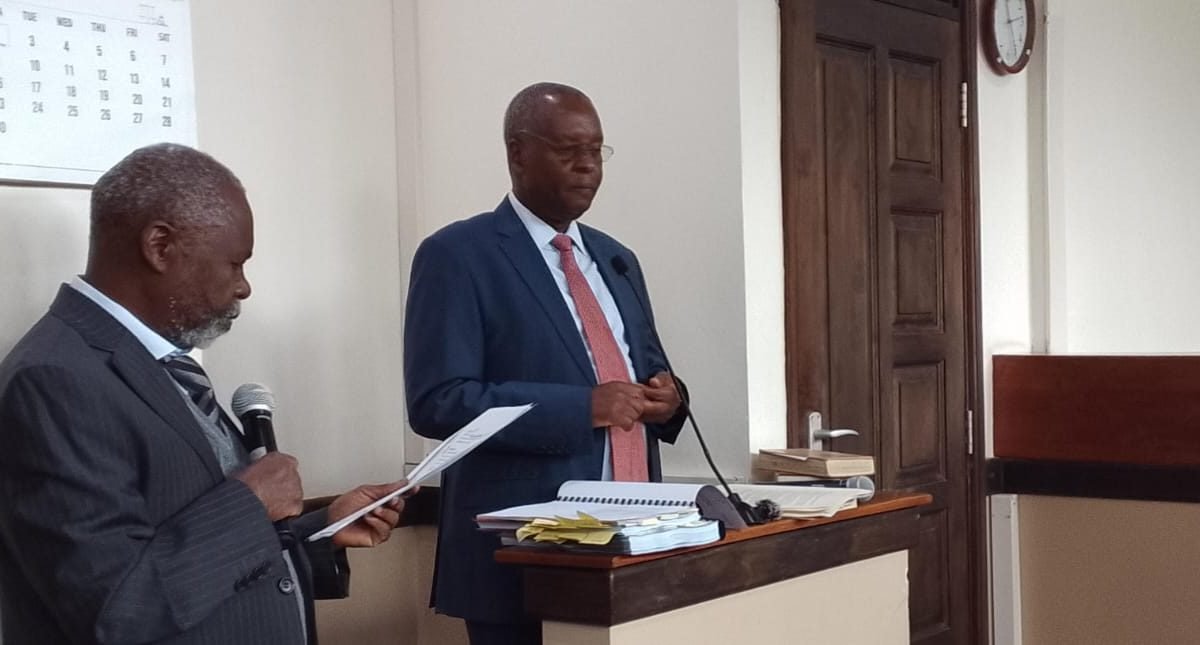By The Weekly Vision Political Desk
Kenya’s political landscape has entered a season of heightened speculation as analysts revisit the country’s electoral map ahead of the 2027 General Election. With shifting alliances, ethnic blocs in motion, and new players entering the arena, a fresh debate is emerging on who holds the upper hand in the race to the State House.
Among the boldest voices in this unfolding conversation is political analyst Herman Manyora, who argues that if Kenyans cast their ballots today, Wiper Party leader Kalonzo Musyoka would secure the presidency with ease. His striking prediction has injected new energy into the national debate, prompting questions about coalition building, regional dynamics and the evolving mood of voters.
Manyora’s argument hinges on what he describes as Kenya’s “tribal democracy”, where voting patterns follow ethnic lines more than ideological persuasion. According to him, any contender capable of stitching together the country’s major voting blocs stands a strong chance of victory. He imagines a scenario in which Mt Kenya, the larger Eastern region, the GEMA community, Western Kenya, and the Abagusii rally behind Kalonzo, a coalition he believes would be almost impossible to defeat. If Mt Kenya were to turn away from President William Ruto and back to Kalonzo, Manyora goes as far as calling it an “automatic win”.
Adding intrigue to this political arithmetic are signals from former President Uhuru Kenyatta, whose recent public remarks have fuelled speculation that he may work with Deputy President Rigathi Gachagua. A rekindled Jubilee–Gachagua axis could have significant implications for Mt Kenya’s political direction, especially if it aligns with Kalonzo’s candidacy.
The potential entry of former Interior Cabinet Secretary Dr Fred Matiang’i into a broader opposition coalition adds yet another layer to this emerging mosaic. His involvement would likely consolidate the Abagusii vote, strengthening Kalonzo’s national appeal. Analysts also point to the possibility of Luhya leaders such as Trans Nzoia Governor George Natembeya and former Defence Cabinet Secretary Eugene Wamalwa backing Kalonzo, an alliance that could deliver a commanding share of the national vote, estimated by some at up to 65%.
Such prospects pose a considerable challenge to President Ruto, particularly in Mt Kenya, where he enjoyed overwhelming support in 2022. Today, internal tensions involving figures like Gachagua and Kiharu MP Ndindi Nyoro risk diluting his influence in the region. The rivalry between his former allies has complicated efforts to maintain a united front on the mountain, creating an opening for opposition advances.
Meanwhile, the President has intensified efforts to charm Luo Nyanza, long a stronghold of the late Raila Odinga. Through government appointments, development projects and strategic engagement, Ruto has softened the region’s traditionally hostile posture. Yet seasoned observers such as former Agriculture Minister Kipruto arap Kirwa caution that goodwill does not always translate into votes. Voting behaviour in Nyanza remains unpredictable, especially considering the more than 700,000 Luos who did not turn out in 2022.
Across other regions, Ruto’s fortunes appear mixed. He remains strong in North Eastern Kenya, though the region’s numbers alone are insufficient to determine a national outcome. At the Coast, the picture is more complex. Manyora believes Ruto could perform well owing to development projects and the influence of leaders such as Hassan Joho and Salim Mvurya. However, coastal urban centres like Mombasa, Malindi and Lamu have significant populations of Luos, Luhyas and Kambas, groups that could bolster Kalonzo if united under his banner.
For Kalonzo, analysts warn that the road to the presidency is not merely a question of ethnic consolidation. The opposition must craft a clear and compelling agenda that resonates with Kenyans beyond slogans such as “Ruto must be a one-term president”. Many recall the 2002 elections, when the opposition’s unity behind Mwai Kibaki delivered victory, a triumph grounded not only in ethnicity but also in credibility, reform messaging and a promise of change.
If Kalonzo hopes to replicate such success, he must present a convincing national vision, articulate an economic recovery plan, push for governance reforms, and demonstrate what sets him apart from the current administration. Without this, the opposition risks appearing fragmented and uninspired.
On the other hand, President Ruto’s allies argue that he retains significant structural advantages as the incumbent. They point to his efforts to address economic challenges, from fertiliser subsidies to housing programmes, as evidence of commitment, even when policies attract controversy. His strategists believe that progress on the economy, maintaining his “hustler nation” appeal, preserving support in Mt Kenya, neutralising opposition gains at the Coast, and expanding his influence among urban youth will be key to securing re-election.
Ultimately, Manyora’s prediction of a Kalonzo victory relies on several major assumptions: that the opposition unites; that Mt Kenya fully backs him; that the Luhya, Kamba and Gusii vote turn out strongly; that voter apathy is suppressed; and that opposition leaders remain cohesive. Political reality, however, is famously fluid.
For now, Kalonzo Musyoka enjoys growing visibility and renewed relevance. He stands out as a formidable challenger, but the journey to 2027 is long, unpredictable and tightly woven into Kenya’s shifting alliances, ethnic calculus and the ever-changing aspirations of voters.
Whether the future belongs to Kalonzo or Ruto, one fact is clear: Kenyans continue to shape their democracy, one election at a time, through the power of ideas, unity and collective resolve.





